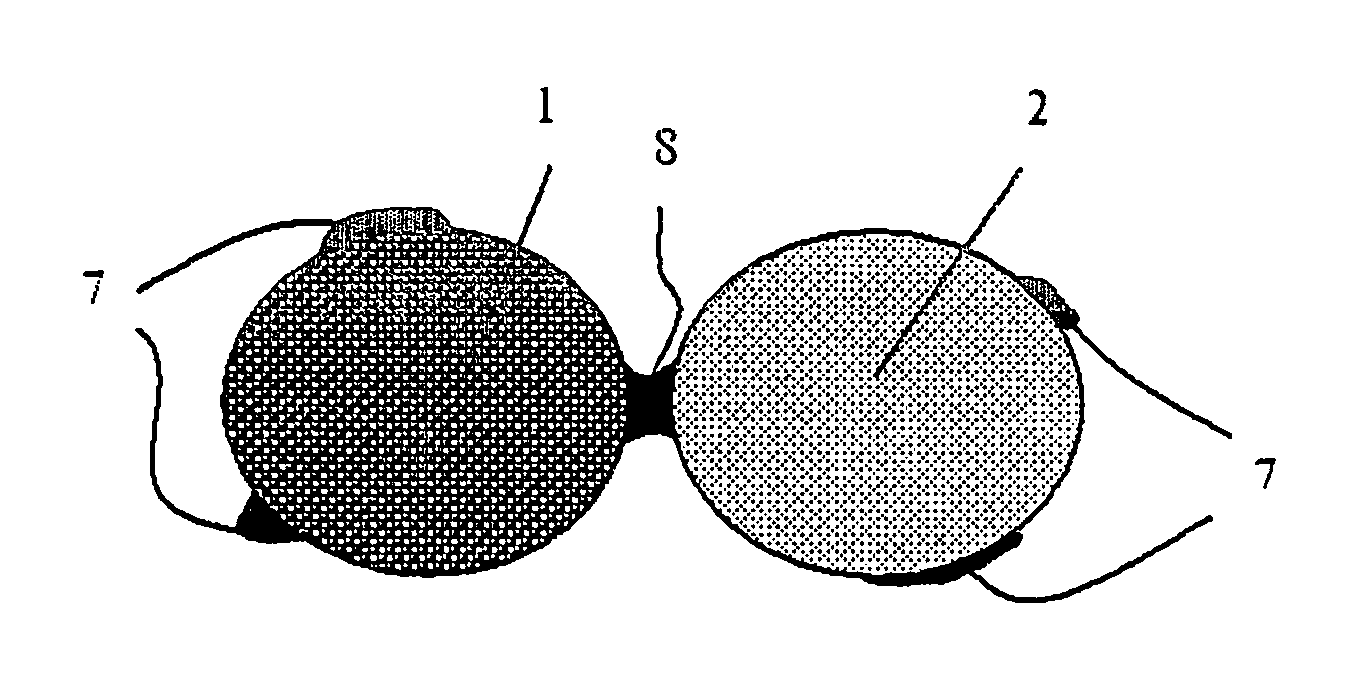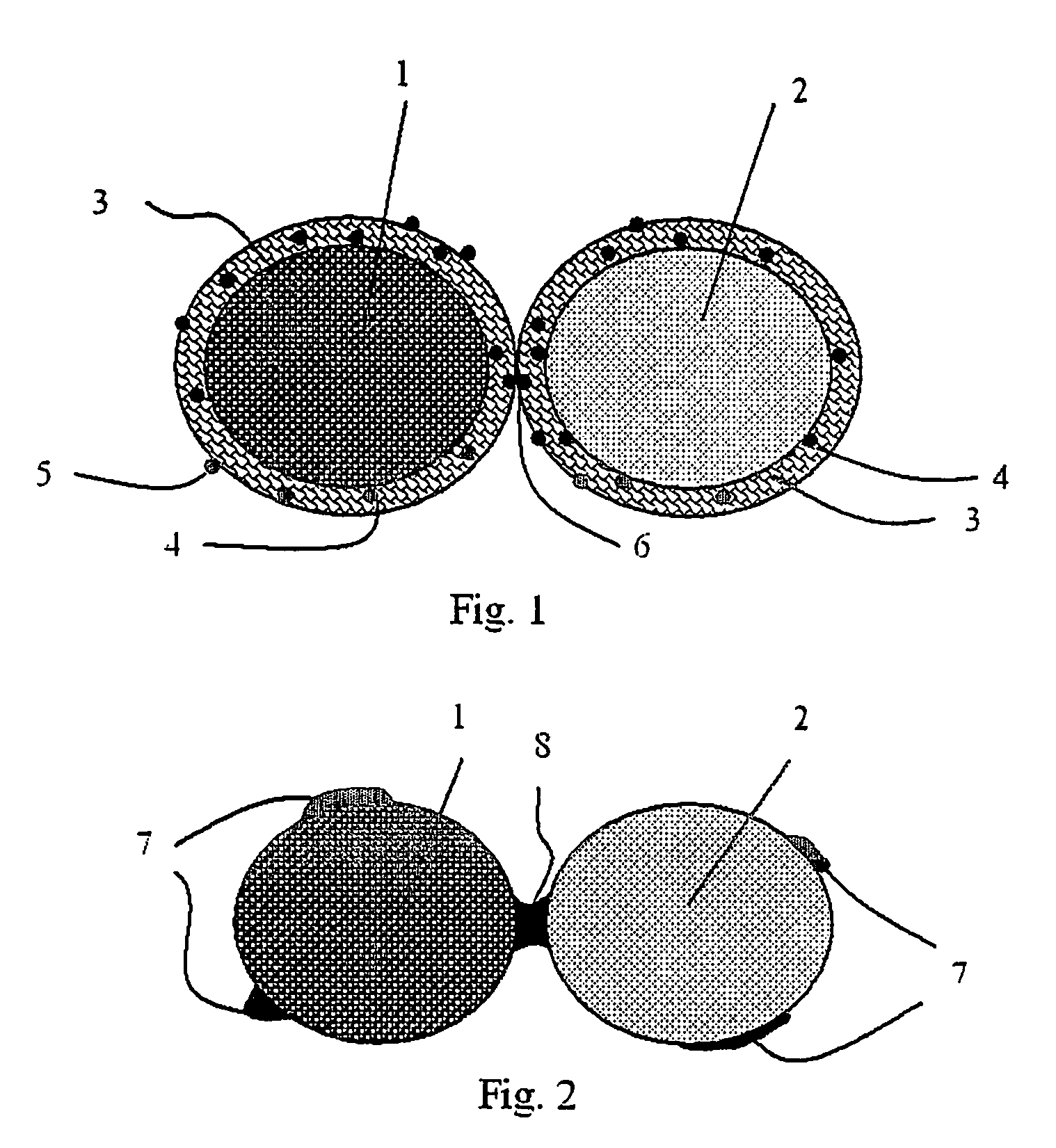Coated powder particles for producing three-dimensional bodies by means of a layer constituting method
a technology of coating powder and layer, applied in the direction of additive manufacturing process, manufacturing tools, transportation and packaging, etc., can solve the problem of distinct shrinkage of finished green compact or sintered body, and achieve the effect of improving storage stability, improving handling, and increasing image distinctness
- Summary
- Abstract
- Description
- Claims
- Application Information
AI Technical Summary
Benefits of technology
Problems solved by technology
Method used
Image
Examples
Embodiment Construction
[0034]For the purposes of the invention, a distinction is to be drawn here between the powder material comprising individual particles of a powder (2) or else aggregates (1) formed by agglomeration, in particular granules, which may be interspersed with non-powder binding phases, and the fine-grained material (4, 5, 6). The fine-grained material comprises individual particles of dimensions which lie distinctly below the dimensions of the powder material. The average particle sizes of the fine-grained material typically lie below 30% of the particle size of the powder material and preferably in the range from 0.3 to 5%. Particularly preferably, the fine-grained material comprises submicron particles or nanoparticles. The fine-grained material (4) in this case lies at least partly within the coating formed by the adhesive (3). Particles (5) protruding from the coating are also preferably covered by adhesive.
[0035]The fine-grained material is composed of sinterable and / or glass-forming...
PUM
| Property | Measurement | Unit |
|---|---|---|
| grain size | aaaaa | aaaaa |
| temperature | aaaaa | aaaaa |
| temperature | aaaaa | aaaaa |
Abstract
Description
Claims
Application Information
 Login to View More
Login to View More - R&D
- Intellectual Property
- Life Sciences
- Materials
- Tech Scout
- Unparalleled Data Quality
- Higher Quality Content
- 60% Fewer Hallucinations
Browse by: Latest US Patents, China's latest patents, Technical Efficacy Thesaurus, Application Domain, Technology Topic, Popular Technical Reports.
© 2025 PatSnap. All rights reserved.Legal|Privacy policy|Modern Slavery Act Transparency Statement|Sitemap|About US| Contact US: help@patsnap.com


